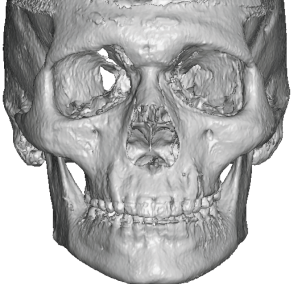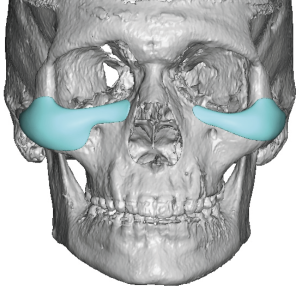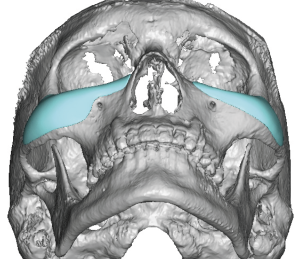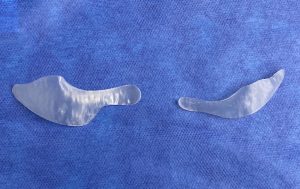Background: Midface augmentation consists of a variety of standard implants from that of the cheeks, tear troughs and nasal base. (premaxillary and paranasal) What custom designs bring to this area of the face is infraorbital, infraornital-malar and a variety of broader coverage midface implants.
The infraorbital-malar (IOM) implant is the most common of all the custom midface implants because it addresses the conditions that are widely experienced….under eye hollows and lack of cheek projection. These two issues are typically related through this tripod bone shape which is a near 90 degree relationship between these two bone surfaces. It is a wrap around implant for the midface that is separated into two pieces by the central nasal bones.
Besides its augmentation effects the custom IOM implant can effectively address a very common midface occurrence…asymmetry. The eye- cheek area is particularly prone to asymmetric development and almost any degree of asymmetry is very easily perceived.
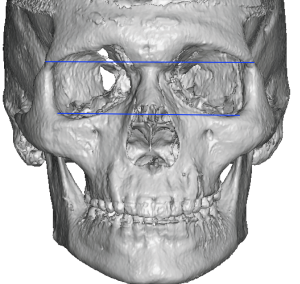

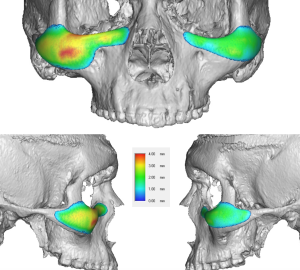
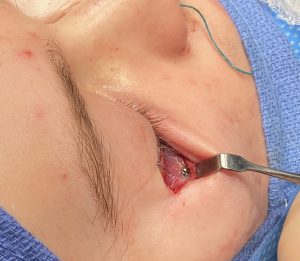
Infraorbital-malar asymmetry is more uncommon than malar asymmetry in patients seeking midface augmentation. When eye asymmetry is evident there will be infraorbital-malar bone asymmetry present. Only a custom implant approach can adequately identify it and have an implant design that optimizes the augmentation between the two asymmetric sides of the midface.
Key Points:
1) Custom infraorbital-malar implants provide a 3D augmentation of the orbito-malar region .
2) Horizontal eye asymmetries have an underlying infraorbital-malar in which custom implant designs can help with the correction/improvement.
3) Limited subciliary lower eyelid incisions is usually all that is needed for the placement of most custom infraorbital-malar implants.
Dr. Barry Eppley
World-Renowned Plastic Surgeon



